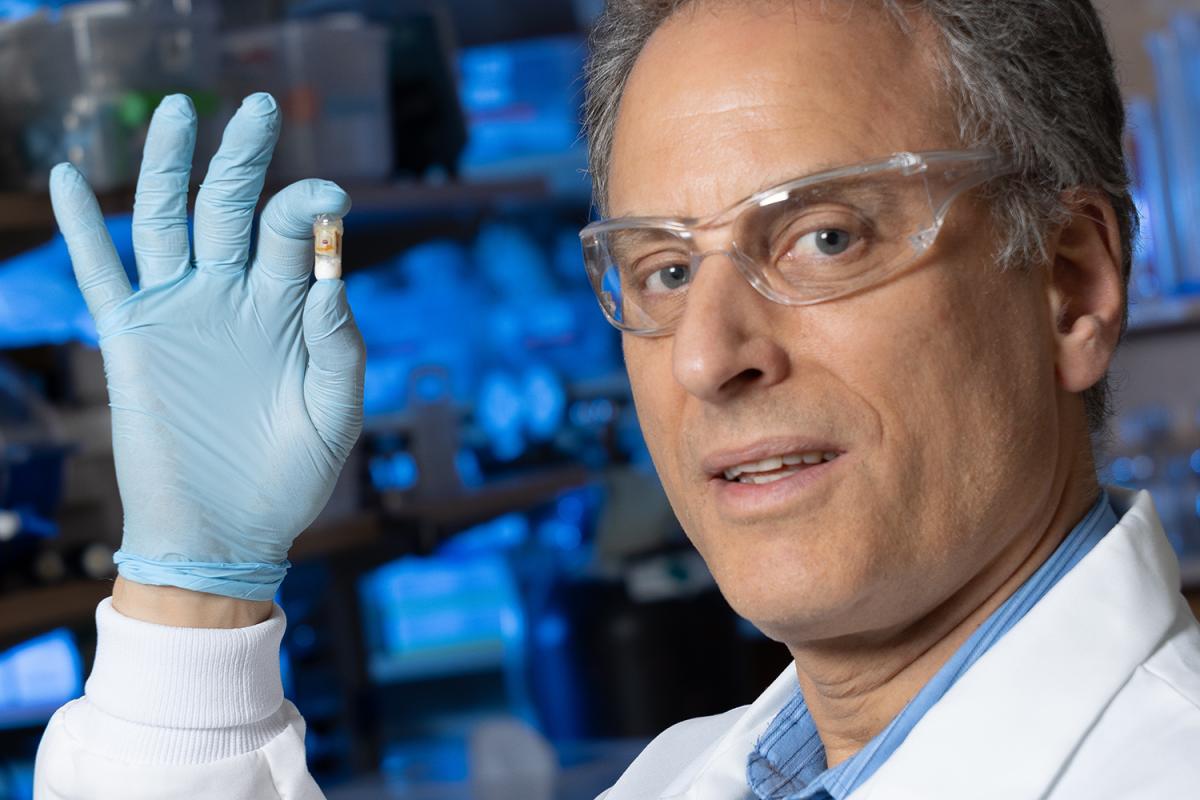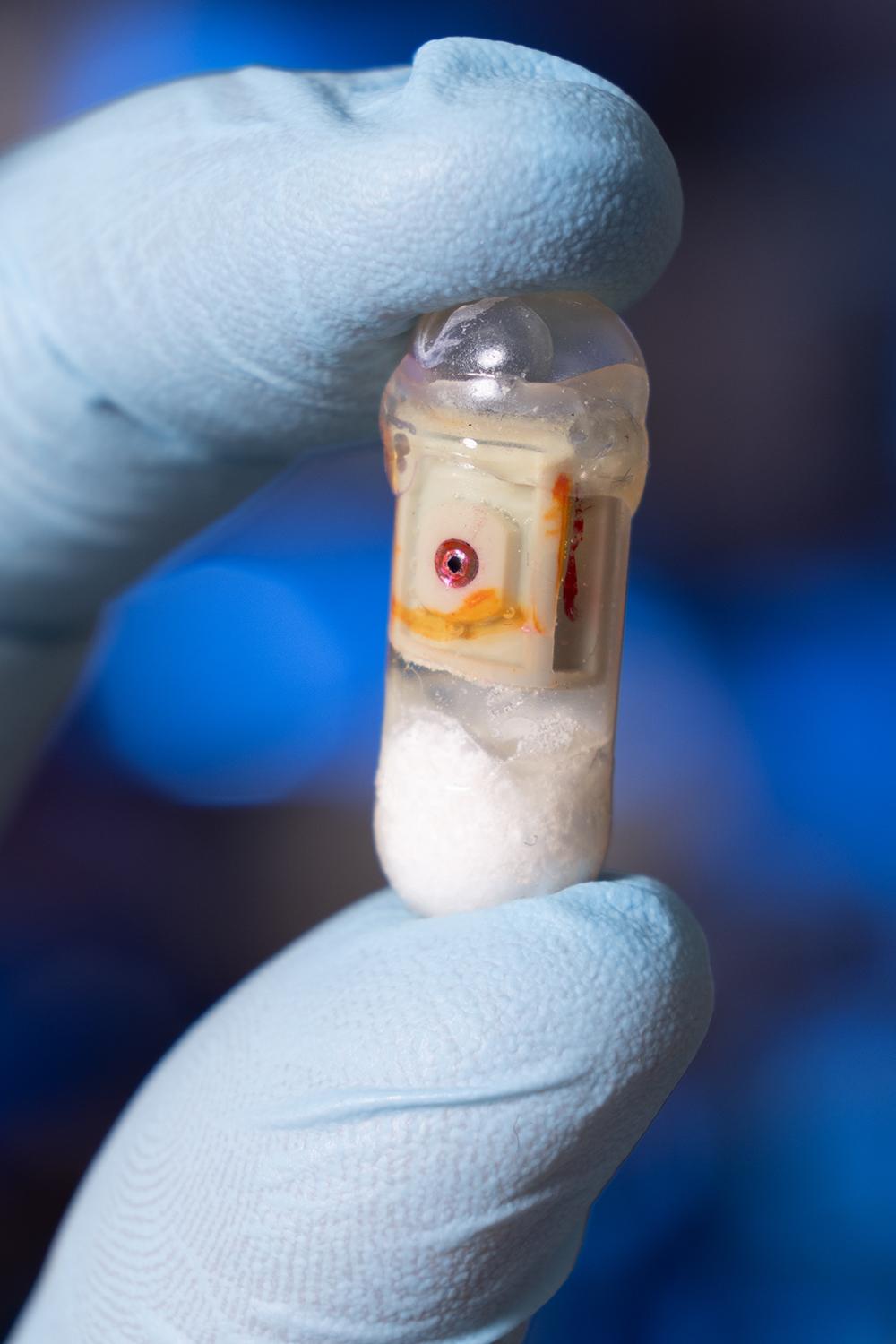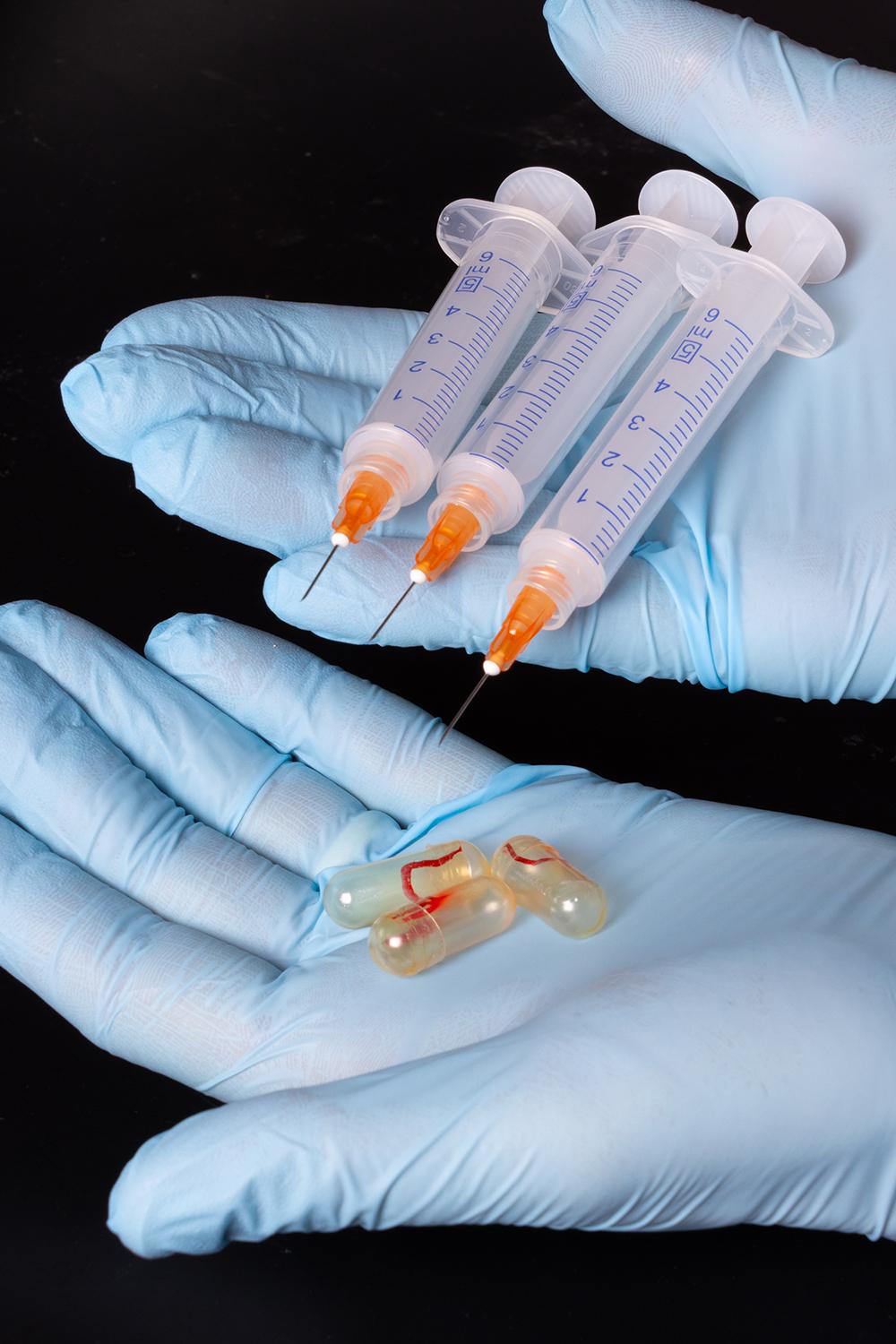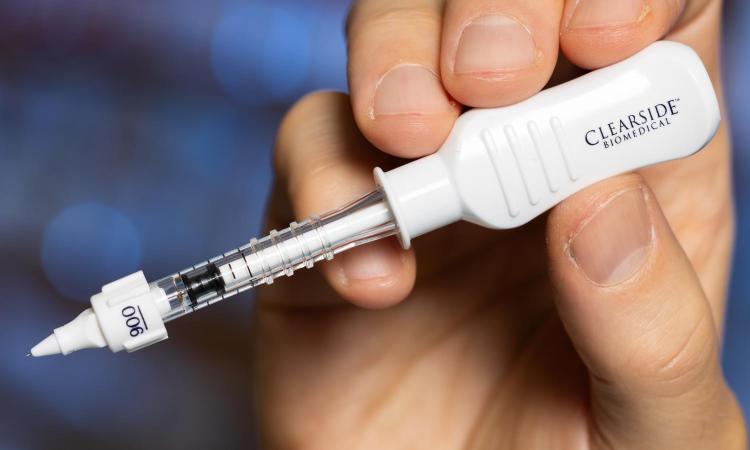Engineers use sodium bicarb to “self-pressurize” a pill able to deliver drugs that usually require injection directly to the small intestine.
(text and background only visible when logged in)

Mark Prausnitz and student researchers developed a self-pressurized capsule as a new form of drug delivery. (Photo: Candler Hobbs)
(text and background only visible when logged in)
Georgia Tech engineers have created a pill that could effectively deliver insulin and other injectable drugs, making medicines for chronic illnesses easier for patients to take, less invasive, and potentially less expensive.
Along with insulin, it also could be used for semaglutide — the popular GLP-1 medication sold as Ozempic and Wegovy — and a host of other top-selling protein-based medications like antibodies and growth hormone that are part of a $400 billion market.
These drugs usually have to be injected because they can’t overcome the protective barriers of the gastrointestinal tract. Georgia Tech’s new capsule uses a small pressurized “explosion” to shoot medicine past those barriers in the small intestine and into the bloodstream.
Unlike other designs, it has no complicated moving parts and requires no battery or stored energy.
“This study introduces a new way of drug delivery that is as easy as swallowing a pill and replaces the need for painful injections,” said Mark Prausnitz, who created the pill in his lab with former Ph.D. student Joshua Palacios and other student researchers.
In animal lab tests, they showed their capsule lowered blood sugar levels just like traditional insulin injections. The researchers reported their pill design and study results July 8 in the Journal of Controlled Release.
“It was important to us not to turn this capsule into a complex device or machine,” said Prausnitz, Regents’ Professor and Entrepreneur and J. Erskine Love Jr. Chair in the School of Chemical and Biomolecular Engineering. “Others have made mechanical devices for protein delivery that you can stick in your mouth or swallow, but they are costly and complicated. We wanted to make a capsule that uses a simple pharmaceutical formulation that is inexpensive to manufacture, but has the power of a mechanical device to increase drug delivery.”

The pill relies on a tried-and-true bubbling reaction of water and sodium bicarbonate to build pressure inside the capsule after it is swallowed. Eventually the pressure overwhelms a small weak spot in the pill’s gelatin exterior, resulting in a jet of drug particles.
The high velocity of the “explosion” sweeps away the mucus that lines the intestine much like a burst of air might shove water aside. It puts the drug right next to the epithelial cells that can transfer it to the bloodstream. Because the drug particles are moving so fast, protein-eating enzymes don’t have a chance to break them down.
The capsule itself is made of the same gelatin material as pills already in your medicine cabinet. It’s been strengthened by exposure to ultraviolet light to help it stand up to the extreme environment in the stomach and small intestine. The capsule has a small internal compartment containing the drug and positioning it for efficient ejection.

The pill has a small weak spot in its gelatin exterior where the drug particles are released. (Photo: Candler Hobbs)

The new capsule could replace the need for injections for insulin and other drugs. (Photo: Candler Hobbs)
“Right from the start, we set an objective to develop the capsule so it can plug right into conventional capsule manufacturing methods,” said Joshua Palacios, the study’s first author and a former Ph.D. student in Prausnitz’s lab. “Obviously, we’re doing a few things differently, but it’s critical to make these capsules at low cost and in large quantity. Leveraging existing manufacturing processes is key to making broad impact with this technology.”
So far, no oral delivery methods for insulin are available to patients. While there are a few other protein drugs taken by mouth, most aren’t absorbed well in the intestine. For example, the body takes up less than 1% of the oral form of semaglutide, called Rybelsus; the other 99% is wasted. The insulin-carrying capsule Prausnitz and his team have developed is designed to increase that absorption, requiring less drug and increasing its effectiveness.
Now the team is working to further increase the percentage of drug that’s absorbed and exploring other injected drugs beyond insulin that might work in their capsule, such as semaglutide.
Prausnitz is known for pioneering microneedles for drug delivery through the skin. His work on skin delivery inspired the self-pressurizing capsule.
“I was thinking about all the different ways that we deliver medications across the skin and how this could be applicable in the intestine,” he said. “While there are mechanical, electrical, ultrasonic, laser, and other devices you can apply to the skin, they are too complicated to be swallowed. But jet injection, which has been widely used for needle-free vaccination, could work in the gut. It’s like a tiny bullet that shoots drug into tissue.
“In the end, there are some differences in the science and mechanism, but the thought process is the same: You shoot something at high pressure against your target.”
(text and background only visible when logged in)
About the Research
This research was supported by the National Science Foundation, grant Nos. DGE-1650044 and DGE-2039655; and the National Institutes of Health, grant No. T32EB006343 . Any opinions, findings, and conclusions or recommendations expressed in this material are those of the authors and do not necessarily reflect the views of any funding agency.
Citation: Palacios JI, Wood-Yang AJ, Klavohn N, Friesenhahn N, et al. High-velocity delivery of biologics via the gastrointestinal tract by self-pressurized oral capsules. J Contr Release. 2025;385:113963. doi.org/10.1016/j.jconrel.2025.113963.

Preeminence in Research
Related Content

Prausnitz Elected to National Academy of Medicine
The chemical engineer, microneedle pioneer, and entrepreneur is the fourth College of Engineering faculty member to join the Academy since 2020.
The chemical engineer, microneedle pioneer, and entrepreneur is the fourth College of Engineering faculty member to join the Academy since 2020.

FDA Approved
Several alumni and faculty members have received FDA approval for devices and procedures in recent years — and are preparing to do it again.
Several alumni and faculty members have received FDA approval for devices and procedures in recent years — and are preparing to do it again.